Revolutionizing Solar Installation Efficiency
Fronius USA’s latest innovation marks a pivotal shift in distributed energy resource (DER) management for U.S. solar installers. By integrating Remote Configuration and Configuration Report Features into their Solar.web platform, they’re not just simplifying tasks—they’re redefining operational efficiency.
Previously, the interconnection approval process was a laborious, time-consuming endeavor that required on-site visits and meticulous paperwork. Fronius now streamlines this by generating a comprehensive, utility-ready configuration report using the standardized Common File Format (CFF) from EPRI. This advancement enables installers to validate and modify system settings in real-time without the need for physical access, effectively cutting work times in half and reducing barriers to adoption for distributed solar.
From an industry standpoint, the adoption of CFF in remote configuration is not just a technical upgrade—it’s a strategic move toward scalability. Utilities have long required proprietary formats for DER integration, which has contributed to slow adoption rates. Fronius’s platform is now future-proof, aligning with standardization efforts and ensuring installers are prepared for evolving regulatory and technical demands.
These tools also have the potential to influence broader system integration challenges. By simplifying data reporting and compliance documentation, Fronius makes DER networks easier to coordinate and manage, which could lead to policy shifts that reimburse installers for their time instead of project caps. As we’ve seen in energy-as-a-service and smart grid projects, remote configurability could turn on-the-ground complexity into cloud-based simplicity.
- The Remote Configuration Feature cuts DER interconnection approval efforts by allowing real-time validation and adjustments using a standardized format.
- This is a strategic advantage for large-scale solar contracts that require interoperable systems between utility companies and installers.
- The move reinforces Fronius as a leader in smart grid and DER interoperability solutions in the U.S. market.
“With Solar.web and the CFF integration, Fronius is significantly reducing physical touchpoints in the installation process, which is both a cost saver and a transparency booster,” stated a recent industry analysis. These features now allow for faster approvals, fewer delays, and ultimately less overhead in the race to deploy clean energy at scale.
As the solar industry continues to evolve, embracing software-driven solutions like these will become a cornerstone for staying competitive. What are your thoughts on Fronius’s latest development? Share your perspective in the comments below.


